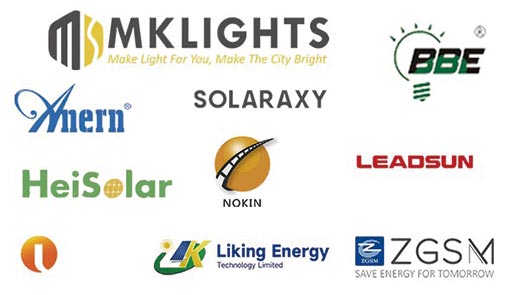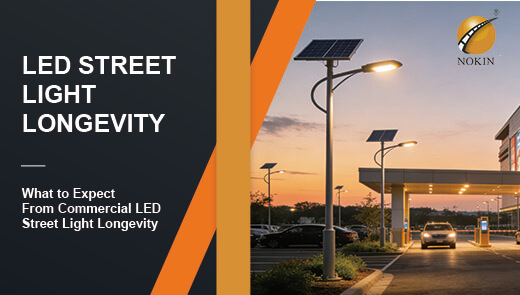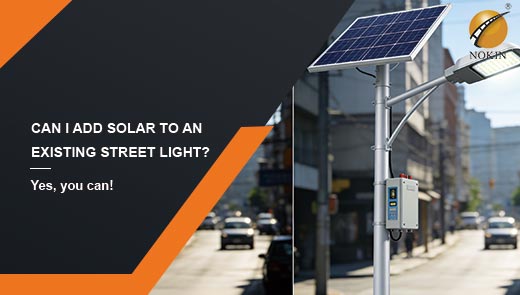Economics of Solar Street Lighting for Construction Projects
Cost control is one of the key factors determining the success or failure of a construction project throughout its entire lifecycle. From preliminary planning to post-construction operation and maintenance, costs at every stage can significantly impact the project's overall profitability.
Traditional streetlights, as an indispensable infrastructure in construction projects, have numerous economic drawbacks. Not only are they complex to install and costly, but their long-term use also incurs significant expenses in terms of energy consumption and maintenance costs.
With the continuous development of renewable energy technology, solar street lights have gradually come into focus. Conducting an in-depth analysis of the economic viability of solar street lights in construction projects is of great significance for construction companies to reduce costs, improve efficiency, and promote the sustainable development of the entire industry.
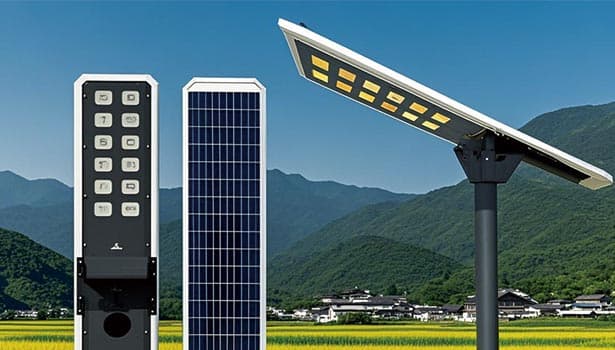
Cost Advantages of Solar Street lights
Installation Cost Advantages
During the installation of traditional streetlights, there are many hidden costs that are often overlooked. In addition to the cost of the lighting fixtures themselves, the following expenses must also be incurred:
- Trenching costs for underground cable laying, which can reach tens of thousands of dollars per kilometer.
- Purchase and installation costs of transformers and other supporting power equipment.
- Coordination costs for interconnecting with regional power grids.
In contrast, the installation of solar street lights achieves a “simplified process”:
- No grid connection is required, eliminating all costs associated with cable-related engineering.
- Each lamp operates independently, avoiding the need for coordination of large-scale equipment.
- A modular installation process is adopted, reducing the construction period by over 50%.
According to industry statistics, for lighting projects of the same scale, the installation cost of solar solutions is 30%-40% lower than traditional solutions.
|
Project |
Traditional Streetlights |
Solar Street Lights |
|
Main Installation Steps |
Extensive trenching, complex wiring, grid connection |
Simple assembly, securing lamp posts |
|
Cost Components |
Trenching costs, cable material costs, professional electrician fees, etc. |
Foundation construction costs, simple installation labor costs |
|
Cost Reduction Ratio |
- |
Approximately 30% |
Energy Cost Advantage
Traditional grid-connected streetlights rely on grid power supply, so they require continuous payment of high electricity bills. Over time, electricity bills accumulate and increase until the streetlights reach the end of their service life. In large-scale construction projects, the number of streetlights required is enormous, meaning that the operations department must incur significant monthly electricity expenses. The larger the construction project and the greater the number of streetlights, the more substantial the electricity costs become!
Unlike traditional grid-connected streetlights, solar street lights are self-sufficient energy units that generate and consume their own power, achieving energy self-sufficiency and effectively eliminating energy costs:
- Powered by photovoltaic panels, they completely eliminate dependence on the grid.
- During cloudy or rainy weather, energy storage via batteries ensures continuous operation.
- An intelligent light control system further reduces energy waste.
Taking an area with an average daily sunlight duration of 4 hours as an example, 100 solar street lights can save over 300,000 USD in electricity costs over a 20-year period.
Maintenance Cost Advantages
Traditional electric streetlights typically use sodium lamps or metal halide lamps as light sources, which have a short lifespan and require frequent bulb replacements, increasing replacement costs. Additionally, traditional streetlights have complex internal structures, and their electrical systems require regular maintenance and repairs, increasing labor costs.
Solar street lights use energy-efficient LED light sources, with LED lamps having a lifespan of over 50,000 hours, far exceeding that of sodium lamps and metal halide lamps, significantly reducing the frequency of bulb replacements and saving on replacement and maintenance costs. Additionally, solar street lights have fewer components and no complex circuits, resulting in lower maintenance requirements.
- Light poles: Solar street light poles made of high-quality steel and treated with galvanization have a service life of several decades, requiring only simple visual inspections and corrosion prevention measures.
- Solar panels: Even under harsh weather conditions, solar panels can last approximately 25 years with proper maintenance, and most manufacturers guarantee they will maintain 80% of their rated capacity after 25 years.
- Batteries: Lead-acid batteries have a lifespan of 5–7 years when properly configured, after which they need to be replaced, though the replacement cost is relatively low. Lithium-ion batteries have a longer lifespan, and if necessary, lithium-ion battery versions of solar street lightscan be prioritized.

Long-Term Economic Benefits of Solar Street Lights
Solar Street Lights Have A Lower Total Cost of Ownership
Many projects hesitate to choose solar street lights due to the high initial investment, but from a lifecycle perspective, their cost-effectiveness far surpasses that of traditional street lights.
The cost structure of traditional street lights follows a “stepwise increase”: in addition to initial purchase and installation costs, long-term use incurs ongoing electricity expenses, frequent maintenance costs, and hidden grid connection fees.
Solar street lights achieve “one-time investment, long-term benefits”: after the initial investment is completed, energy costs are nearly zero, and maintenance costs are less than 30% of those for traditional street lights.
According to authoritative cost analysis data, over the entire lifespan, each solar lighting system can save $1,500–$1,800 compared to traditional grid-connected lighting systems.
Significant Return on Investment
Solar street lights create stable investment return opportunities for construction projects by reducing operational and maintenance costs.
Research by the Solar Energy Industries Association (SEIA) indicates that solar lighting can reduce lifetime energy costs by up to 80%, translating to substantial cost savings over the project's lifecycle.
As photovoltaic technology continues to evolve, the manufacturing costs of solar street lights have decreased annually, while photovoltaic conversion efficiency has continued to improve, further shortening the investment payback period. For large-scale infrastructure projects, this long-term compounding return effect is particularly significant.
Investment Payback Period Calculation
Taking a project with 100 streetlights as an example:
- Initial investment difference: The solar solution is $150,000 higher than the traditional solution.
- Annual cost savings: Approximately 30,700 USD.
- Static payback period: 4.89 years.
If government subsidies are factored in, the payback period can be reduced to 2–3 years, far exceeding the investment return levels of typical infrastructure projects.
Economic Incentive Policies
U.S. Government Incentives
- The federal government's Investment Tax Credit (ITC) policy provides strong support for solar projects. When introduced in 2006, the policy offered a 30% tax credit on the total cost of solar projects. By 2022, the credit rate for commercial solar projects had decreased to 10%.
- Energy Efficiency and Conservation Block Grants: Provide funding support for municipal solar lighting projects, with a maximum of 500,000 USD per project.
- Qualified Energy-Efficient Property Tax Deduction: Eligible solar lighting systems can enjoy a tax deduction of $0.60 per square foot annually, for up to 10 years.
EU and Member State Supporting Measures
The EU and its member states have introduced a series of differentiated policies:
- EU Green Deal: Incorporates solar infrastructure into the “EU Recovery Plan,” providing low-interest loans with interest rates 2-3 percentage points below the market average.
- Germany: Provides a 20% subsidy on initial investments for solar lighting projects in the public sector, while also allowing participation in carbon emissions trading.
- France: Introduced the “Solar City Program,” offering a 50% reduction in grid connection fees for municipal projects installing solar street lights.
Local-Level Incentives
In addition to federal government incentives, individual states also have their own solar incentive programs. For example, California's solar program provides additional rebates and incentives for solar projects.
Local municipalities often provide grants and rebates to support community projects. These local-level incentive policies, combined with federal policies, can further reduce the cost of solar streetlight projects.
To learn about specific local incentive policies, you can consult the Database of State Incentives for Renewables & Efficiency (DSIRE) website, which lists relevant incentive measures for each state, making it convenient for project developers to obtain information and apply for corresponding benefits.
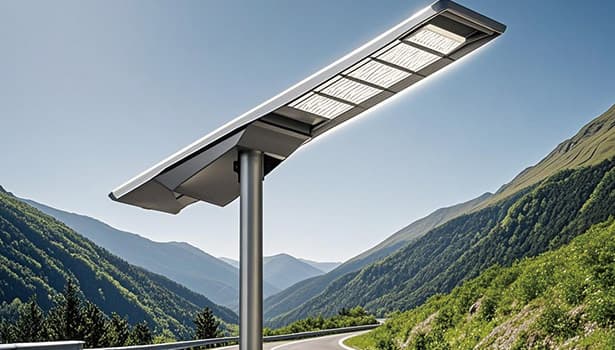
Solar Street Lights Initial Investment Analysis
Initial Cost Composition
The initial cost of solar street lights primarily includes the following components:
- Photovoltaic modules: accounting for approximately 35% of the total cost, selecting products with a conversion efficiency of over 20% is more cost-effective.
- Energy storage batteries: accounting for 25%, it is recommended to choose lithium iron phosphate batteries, which have a cycle life of over 2,000 cycles.
- Control system: accounts for 15%. Systems with intelligent dimming functionality can improve energy utilization by 15%.
- Purchase cost of the lamp post. Different materials and specifications result in varying prices.
- Related costs during installation, such as foundation construction costs and installation labor costs.
Although these initial costs are higher than those of traditional streetlights, as mentioned earlier, the long-term cost savings can offset this difference.
Balancing Initial Investment and Long-Term Benefits
It is undeniable that the initial investment in solar street lights is high, but when considering the subsequent cost savings and incentive policies, their overall economic viability is evident.
The initial investment can be partially offset by government and local incentive policies. During project operations, the savings in energy costs and maintenance expenses will accumulate over time.
Over time, the initial investment and long-term benefits will reach a balance, after which solar street lights will continue to generate cost savings for the project. For construction projects, this balance between initial investment and long-term benefits is worthwhile, as it can generate economic benefits for the project in the long term.
Optimization Strategies for Investment Allocation
- Prioritize deployment in areas with good lighting conditions to reduce the cost per unit of illuminance.
- Adopt a “phased investment” model, installing in stages according to construction progress.
- Select suppliers with financing lease qualifications to alleviate initial capital pressure.
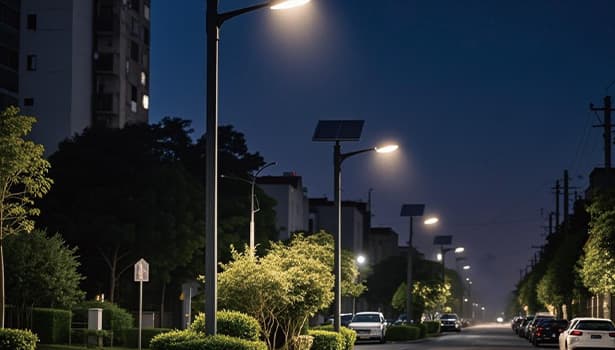
Conclusion
The application of solar street lights in construction projects is not merely a simple equipment replacement but a paradigm shift in cost management.
In the short term, their installation cost advantages are significant; in the long term, their zero energy consumption and low maintenance characteristics create a sustained cost barrier. When combined with policy incentives, their economic viability far surpasses that of traditional streetlights.
Under the dual drivers of the “dual carbon” goals and new infrastructure policies, choosing solar street lights is not only a rational choice for cost optimization but also a concrete practice for construction companies to fulfill their social responsibilities. It is recommended to prioritize solar lighting solutions in new construction projects, achieving synergistic growth in economic and environmental benefits through lifecycle cost management.

